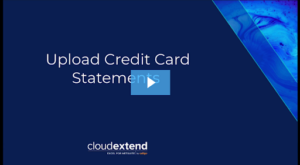Managing vendor bills is an essential part of any business. As businesses grow, so does the volume of financial transactions that need to be managed, including vendor bills.
Entering Vendor Bills in NetSuite
NetSuite, a popular cloud-based enterprise resource planning (ERP) system, offers powerful tools for managing financial processes, but entering vendor bills in the UI can still be time-consuming and tedious, especially if you have a large number of bills to process or complex data to input.
CSV Import of Vendor Bills to NetSuite
CSV import is another option for entering vendor bills into NetSuite but this can also be time-consuming. Two imports would be required to complete this process, one for purchase orders and one for the related vendor bill. Each individual import would need to have an external ID mapped. The external ID on the vendor bill needs to match the external ID imported on the associated purchase order.
Using ExtendInsights to Manage Vendor Bills in NetSuite
CloudExtend’s integration app ExtendInsights offers an efficient and user-friendly way to enter vendor bills in NetSuite. ExtendInsights is a powerful add-in that seamlessly integrates Excel with NetSuite, a leading cloud-based enterprise resource planning (ERP) software. This innovative tool allows you to enter and manage vendor bills directly from Excel, providing you with a familiar interface to streamline your workflow.
One of the main advantages of using ExtendInsights is its ability to enhance your productivity and efficiency. With this tool, you can easily create, edit, and import vendor bills from Excel into NetSuite, eliminating the need for manual data entry or copying and pasting information. ExtendInsights also provides advanced functionalities, such as bulk uploading of bills, automatic data validation, and error checking, which can significantly reduce the time and effort required to process vendor bills. This allows your finance team to focus on other important tasks, resulting in increased productivity and faster bill processing times.
Examples of Managing Bills from Vendors in NetSuite
Allocating Vendor Bills with Large Sets of Data by Department
Many vendor bills require that costs be allocated to certain departments. An example of this is corporate cell phone bills. These bills typically will have one total with separate charges for each employee. To accurately account for departmental costs down to the employee level the AP team would need to enter one bill with hundreds of lines (one for each employee) and then code those to a specific department. With ExtendInsights, the AP team can download the phone bill and transform it into an ExtendInsights Excel-based template, review it, and upload it to NetSuite. All this happens in seconds vs an hour or more to account for the same data manually.
Uploading Credit Card Statements to NetSuite
Most credit card transactions do not yet exist in the ERP and need to be accounted for each month. Export your credit card statement to Excel (almost every credit card company offers this option). Once in Excel, you have a powerful number of tools available to you. Combine these with ExtendInsights and NetSuite and you can import a month’s worth of credit card transactions in less than five minutes (and yes, get that game of golf in). Keep a running list of all the merchants and their associated G/L accounts (Sunoco = Auto Expense: Fuel). Then use a macro to get the data into an ExtendInsights journal entry. Choose to have one journal entry created for each transaction or import the entire credit card statement as one journal entry.
Enhanced Accuracy, Flexibility, and Customization When Managing Vendor Bills in NetSuite
Accuracy is crucial in financial management to avoid costly errors and financial discrepancies. With ExtendInsights, you can ensure that your vendor bills are entered accurately into NetSuite. The tool validates data before you upload, checking for errors, inconsistencies, and duplicates before uploading the bills into NetSuite. This helps to reduce the risk of human errors, such as data entry mistakes or typos, which can lead to inaccurate financial records and reconciliation issues. By improving data accuracy, ExtendInsights helps you maintain clean and reliable financial data in NetSuite, ensuring that your books are always up-to-date and accurate.
ExtendInsights offers a high level of flexibility and customization, allowing you to tailor the tool to your specific business needs. You can easily configure the add-in to match your existing vendor bill templates with support for custom fields, or create new ones, ensuring that the bills entered in Excel align with your company’s requirements.
Conclusion
ExtendInsights offers a cost-effective solution for entering vendor bills in NetSuite. Compared to other methods, such as manual data entry or using NetSuite’s built-in interfaces, ExtendInsights can save time and effort, reduce the risk of errors, and improve data accuracy and efficiency. Moreover, ExtendInsights offers a subscription-based pricing model, which allows businesses to choose the plan that best fits their needs and budget, and avoid upfront costs or expensive customization fees.
Using ExtendInsights for NetSuite for entering vendor bills can greatly enhance your accounts payable process. It improves efficiency, reduces errors, increases flexibility, provides improved visibility, enhances collaboration, and can result in cost savings for your business.

